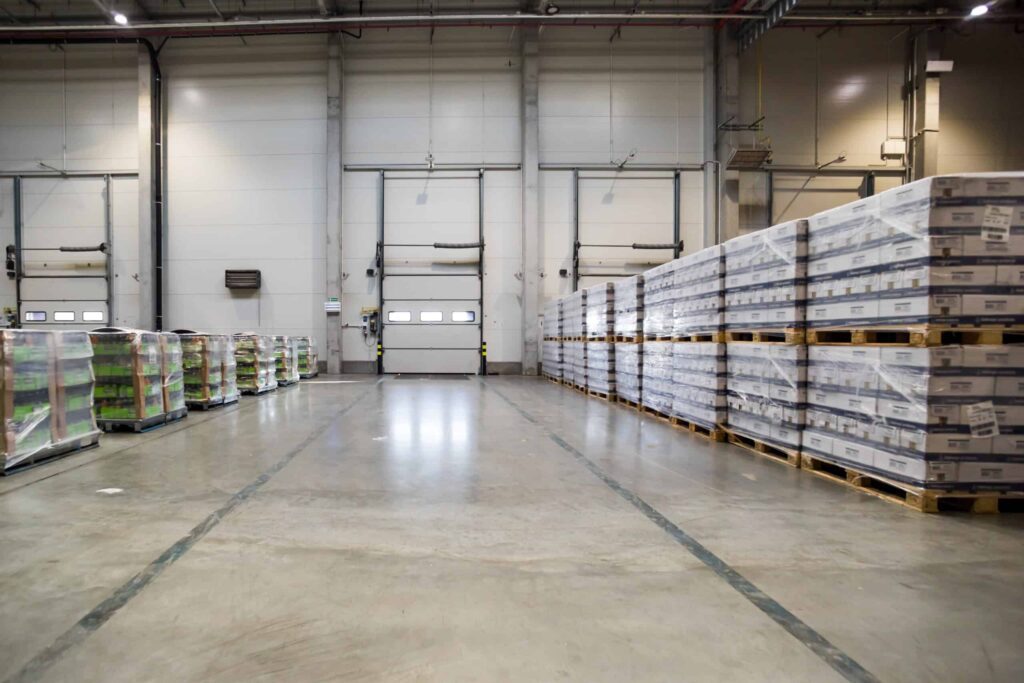Over the last decade, temporary buildings have moved from being seen as stop-gap solutions to becoming strategic assets for forward-thinking organisations. With modern designs capable of lasting twenty years or more, and the ability to customise them for almost any purpose, these versatile structures are appearing in more industries than ever before.
In 2025, a mix of economic, environmental, and social trends is driving fresh demand for temporary buildings in unexpected areas. From innovative retail concepts to high-tech manufacturing hubs, their adaptability is proving invaluable for businesses seeking speed, cost savings, and flexibility.
1. E-Commerce Fulfilment Hubs
The rapid growth of online shopping has increased the need for localised fulfilment and distribution centres. Companies want to get products to customers quickly, but building new warehouses from scratch is costly and time-consuming. Temporary buildings provide a perfect solution.
Retailers and logistics firms are setting up temporary fulfilment hubs in strategic locations to cut delivery times and manage seasonal peaks. These facilities can be fitted with racking systems, conveyor belts, and climate control to handle everything from electronics to perishable goods.
Because they can be relocated as demand shifts, businesses can move closer to new markets without committing to long-term leases or construction projects. This agility is critical in an industry where consumer expectations change rapidly.
2. Modular Training Centres
Workforce training is a growing priority, especially in sectors like manufacturing, construction, and renewable energy. Traditional training centres can take years to build, but temporary buildings can be installed quickly, allowing programmes to begin without delay.
These facilities can include classrooms, practical workshop spaces, and even simulation environments. For example, a wind turbine manufacturer might use a temporary building to create a hands-on training space for technicians, complete with equipment mock-ups and safety rigs.
Organisations can also relocate the building to different regions, bringing training directly to the areas that need it most. This portability makes it easier to scale training programmes nationally without the cost of multiple permanent sites.
3. Flexible Manufacturing Units
Manufacturers often face the challenge of expanding or reconfiguring their production lines in response to new contracts, product launches, or shifting market demands. Temporary buildings make it possible to add production space without disrupting existing operations.
These units can be customised with reinforced flooring for heavy machinery, ventilation systems for specialist processes, and temperature control for sensitive manufacturing environments. In some cases, they’re used as temporary clean rooms for industries like pharmaceuticals or electronics.
Because the structures are modular, they can grow alongside production needs, allowing companies to increase or reduce capacity without waste.
4. Hybrid Office-Warehouse Spaces
As businesses seek more flexible working models, hybrid spaces are becoming popular. Many companies want a combination of office areas and practical storage or workshop space under one roof.
A temporary building can be divided into zones, with insulated, climate-controlled offices at one end and open warehouse or workshop space at the other. This setup is ideal for trades, online retailers, and service providers who need both administrative and operational functions on-site.
By adapting the internal layout, businesses can adjust the ratio of office to storage space as their priorities change.
5. Pop-Up Event Venues
The events industry thrives on novelty and location flexibility. Whether it’s a trade show, exhibition, product launch, or cultural festival, organisers often need custom-built venues in unique places.
Temporary buildings are perfect for this. They can be erected on-site in a matter of days, configured for audience seating, display stands, catering facilities, and more. With modern insulation and climate control, they work for events year-round, not just in the summer months.
Because they can be dismantled and reused, the same structure can host multiple events in different cities over the course of a year, dramatically reducing the cost per use.
6. Community and Emergency Facilities
Local authorities, charities, and aid organisations are increasingly using temporary buildings to meet urgent needs. This includes everything from vaccination centres to temporary schools and sports halls.
When emergencies strike — whether due to flooding, fire, or other disruptions — these buildings provide a rapid, reliable shelter for essential services. After the pandemic highlighted the importance of adaptable space, many councils now keep temporary buildings as part of their contingency planning.
These structures can also serve longer-term community functions, such as youth centres, libraries, or health clinics in areas awaiting permanent infrastructure.
7. Green Energy Infrastructure Support
The renewable energy sector is expanding at an unprecedented rate, and with it comes the need for operational and storage facilities in remote locations. Wind farms, solar installations, and battery storage sites often require secure, weatherproof buildings for equipment and maintenance crews.
Temporary buildings offer an environmentally friendly option that aligns with the sector’s values. Many can be equipped with solar panels, rainwater harvesting systems, and eco-friendly insulation. Plus, their relocatable nature means they can move with a project’s lifecycle.
Why These Uses Are Gaining Popularity
The growth of these new applications isn’t just about the versatility of the structures themselves. It’s also being driven by larger economic and social factors:
- Economic uncertainty – Businesses want to avoid large, irreversible capital investments.
- Speed-to-market pressure – Being able to operate within weeks rather than months provides a competitive advantage.
- Workplace flexibility – The shift towards adaptable working environments favours modular, reconfigurable solutions.
- Sustainability goals – Reusable, relocatable buildings produce less waste and often use more eco-friendly materials.
- Changing consumer habits – From faster deliveries to experiential events, customer expectations require agility in physical space.
Features Making These Uses Possible
Modern temporary buildings are equipped with advanced features that make them suitable for such a diverse range of uses:
- High-quality insulation to ensure comfort and energy efficiency in all seasons.
- Robust structural frames capable of supporting specialist equipment and heavy loads.
- Customisable interiors to create offices, workshops, retail areas, or storage zones.
- Climate control systems for sensitive products and comfortable working environments.
- Security features including lockable doors, CCTV mounts, and alarm systems.
- Branding options to match corporate identity, from external cladding colours to signage.
These features mean that temporary buildings can match — and often exceed — the performance of permanent structures for specific applications.
Looking Ahead: The Next Wave of Uses
Given the pace of change in 2025, it’s likely we’ll see even more innovative uses for temporary buildings in the years ahead. Potential areas of growth include:
- Urban farming hubs – Combining controlled growing environments with retail space.
- Film and TV production facilities – Providing flexible sound stages and storage.
- Tech development labs – Housing experimental projects without committing to long-term leases.
- Sports training complexes – Portable facilities for clubs and academies.
As materials and construction techniques continue to evolve, the lifespan, appearance, and capabilities of these buildings will only improve.
Final Thoughts
Temporary buildings are no longer a niche solution. They are an integral part of how industries from logistics to education plan their operations. The examples emerging in 2025 show that their potential is far from fully explored.
Whether used for short-term events or as semi-permanent operational hubs, their speed, flexibility, and adaptability make them an invaluable tool for businesses and organisations navigating an unpredictable world. If you’re business is ready to take it to the next level, contact us today!

